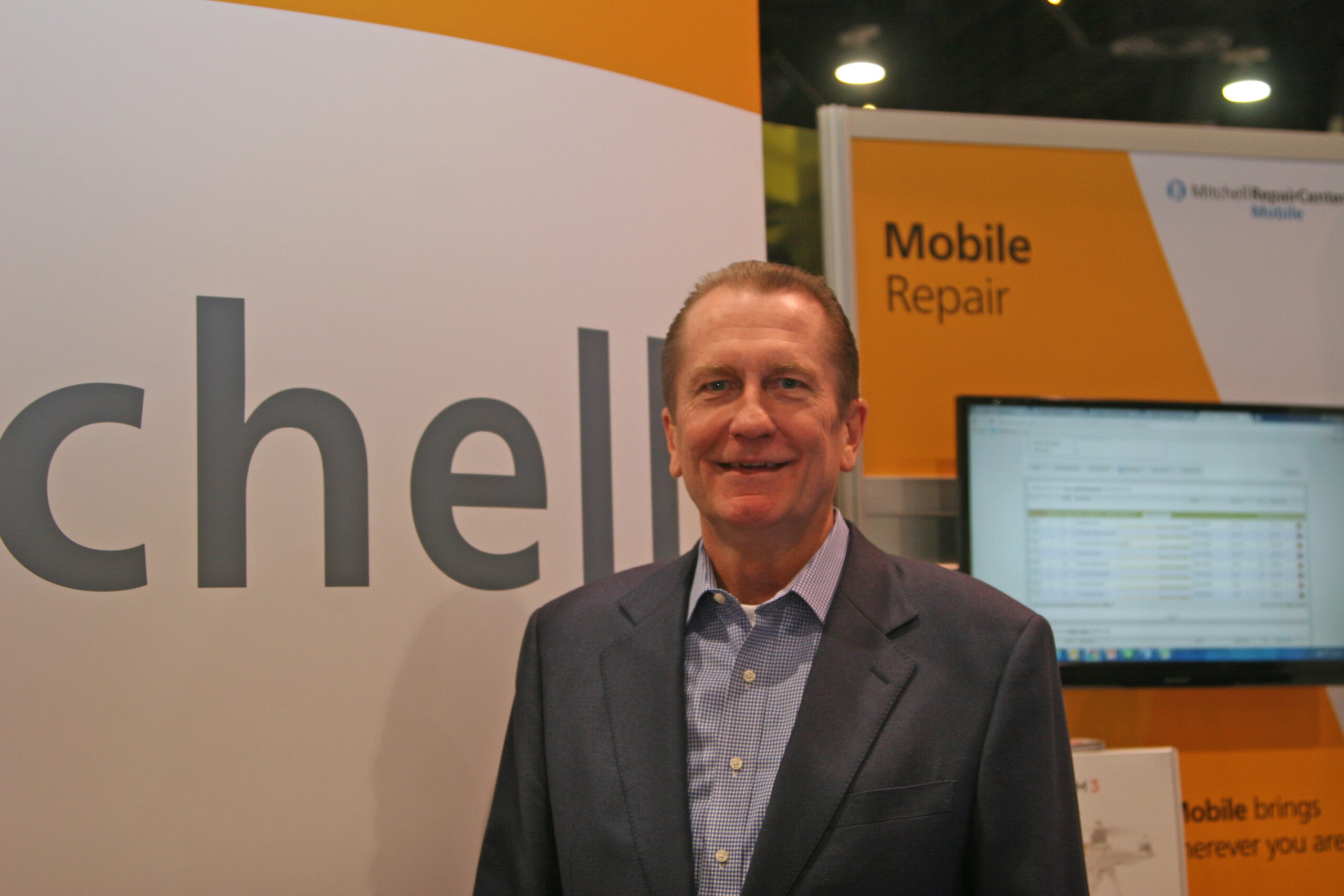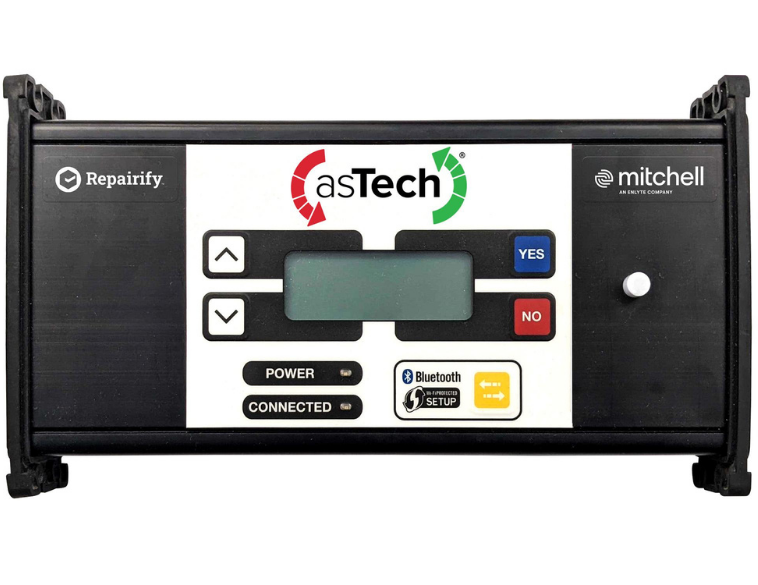New diagnostic solution from asTech and Mitchell provides repairers and insurers with a new level of accessibility and efficiency.
Mitchell and Repairify (the parent company of asTech) recently announced the launch of a new collision diagnostics solution, the MD-0E22.
With the MD-OE22, collision repair technicians in both the U.S. and Canada can search for, identify and resolve diagnostic, electronic, and computer-related trouble codes on collision-damaged vehicles from the most popular brands, up to and including the newest 2022 model year vehicles.
Powerful solution
By combining asTech’s patented OEM scanning device and remote services with Mitchell’s cloud-based eco-system and estimating software, the result is a very powerful solution for collision centres and insurers
To understand more about the significance of this new solution and the potential impact for the industry going forward, Autosphere spoke with Cris Hollingsworth, President of Repairify Global Holdings, and Jack Rozint, Senior Vice President, Repair Sales at Mitchell.
Rozint explains that while many in the collision repair industry are looking for that “Silver Bullet,”—in other words—a single device that can be used to solve all problems on every vehicle, it simply doesn’t exist today.

And while there are multiple OEM tools and calibrations available, acquiring and using them all effectively is extremely expensive and time-consuming, making it virtually impossible in the real world.
Instead, most repairers have settled on an aftermarket OEM scanning solution with access to remote OEM scanning information and a choice in the way calibrations are performed. These can be done in-house at the collision centre, performed by a mobile service provider, or outsourced to an OEM-franchise dealership.
Faster, more accurate repairs
Over the last few years, Mitchell has been working on bringing to market, best-in-class repair solutions that are designed to improve the efficiency of the scanning and diagnostics process, allowing for faster, more accurate repairs and shorter cycle times. Rozint says that these concepts were what led to the partnership with Repairify and the launch of the MD-OE22
“A lot of customers that use our aftermarket scanning solution [at Mitchell], also use asTech for their OEM post-scanning,” explains Rozint. “And those customers benefit from what we’re introducing here [with the MD-OE22], which is an integrated solution.”
Rozint also notes that the partnership allows for efficient backend workflow, ensuring all documents related to the repair are properly handled, billing to the insurers is performed accurately and efficiently, and that everybody involved in the repair gets paid.

Cris Hollingsworth explains that on the collision diagnostics side when it comes to the OEMs, there are currently, challenges in accessing data and repair information.
The problem, says Hollingsworth, is that OE data often comes out at different times and in different formats, so there’s often a lag in getting that repair information which translates to delays in the repair process and an increase in cycle time.
“Productionized” data
In these kinds of situations, he says it simply isn’t possible for collision shops and their technicians to keep up with it, which is why the data needs to be “productionized” and incorporated into a scan tool.
Hollingsworth also says that in terms of diagnostics versus calibrations, data tends to come a little faster on the diagnostic side because the process is simpler. With diagnostics; “you’re doing a scan of a vehicle,” he explains, “whereas with calibrations you tend to be getting much more interactive with the vehicle as well as dealing with more safety systems.”
Additionally, at the shop level, there are other aspects to consider. When technicians use a local aftermarket scan tool to perform diagnostics, Hollingsworth says that often, there are some influencing factors related to how these tasks are performed, such as when a technician uses the local tool and/or when they feel they need to use the OEM scan tool.
The reasons for going with the OE tool can vary from lack of coverage with the aftermarket tool to specific rules or procedures dictated by the shop, MSO, or even the OEM or insurer. And if one insurer or OEM requires a different process from another, things can become very complex, very quickly.
In terms of diagnostics, Hollingsworth says that in most cases, shops will perform pre-scanning using a local aftermarket tool and post-scanning using the OEM tool. When it comes to calibrations, there’s also an emphasis on using OE tools, particularly when it comes to newer vehicles, since the data on them is relatively recent, often making it harder for the aftermarket to access that information.
Easy to access
Jack Rozint notes that the integration between asTech and Mitchell will be released in a couple of different phases, though the end objective is that when a Mitchell customer is using the asTech scanning solution, the reports come back into Mitchell’s cloud-based eco-system via asTech servers. Because the information is transported automatically to the cloud and stored in the Mitchell Connect digital repository, the data can be easily archived, accessed, and accurately matched with the estimate for a particular vehicle.
“Through our collaboration with asTech,” explains Rozint, “Mitchell customers can access best-in-class OEM and aftermarket scanning with advanced cloud-based document management for all scan types.” This means that via Mitchell’s open platform, collision repairers and insurers have access to the technology and information they need for almost every stage of the claims process.”
Additionally, because the MD-OE22 it’s based on asTech’s patented remote diagnostic device, it can also connect diagnostic information from official OEM scan tools to valuable repair advice provided by ASE and I-CAR Certified technicians. When you combine that with the ability to have all returned information presented within the Mitchell cloud-based platform, the result is a platform that is easy to use, extremely versatile and for many collision centres and insurers, a game-changer in the way both claims and repairs are tracked and performed.



